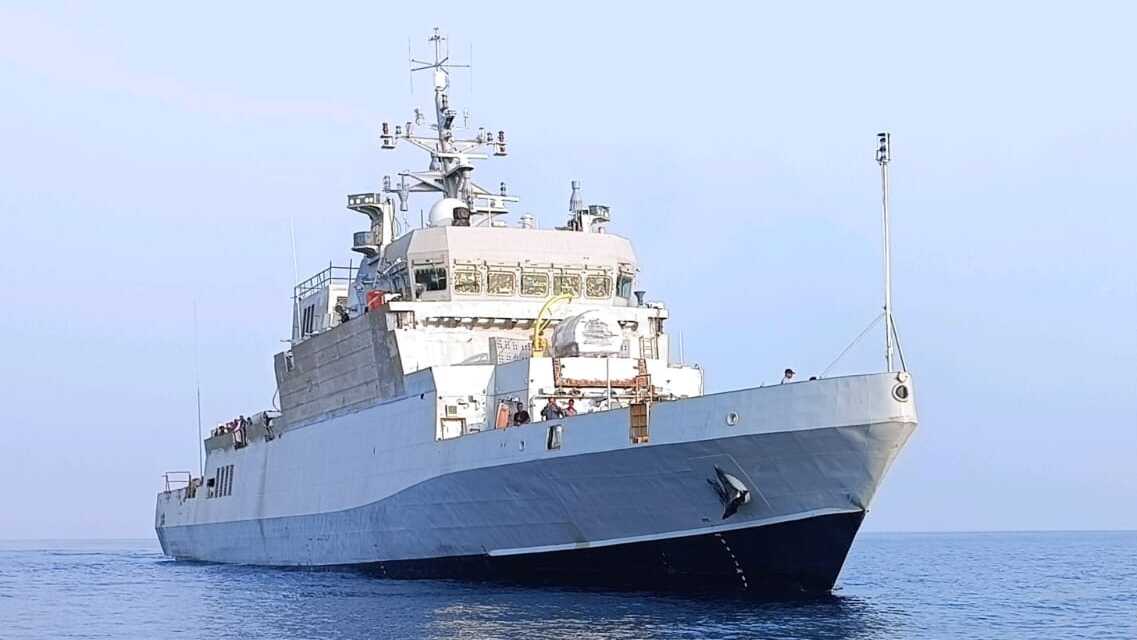- Courses
- GS Full Course 1 Year
- GS Full Course 2 Year
- GS Full Course 3 Year
- GS Full Course Till Selection
- Online Program
- GS Recorded Course
- NCERT (Recorded 500+ Hours)
- Polity Recorded Course
- Geography Recorded Course
- Economy Recorded Course
- AMAC Recorded Course
- Modern India, Post Independence & World History
- Environment Recoded Course
- Governance Recoded Course
- Science & Tech. Recoded Course
- International Relations and Internal Security Recorded Course
- Disaster Management Module Course
- Ethics Recoded Course
- Essay Recoded Course
- Current Affairs Recoded Course
- CSAT
- 5 LAYERED ARJUNA Mentorship
- Public Administration Optional
- ABOUT US
- OUR TOPPERS
- TEST SERIES
- FREE STUDY MATERIAL
- VIDEOS
- CONTACT US
PM Modi’s US Visit
PM Modi’s US Visit

In February 2025, Prime Minister Narendra Modi paid an Official Working Visit to the United States, marking a significant step in strengthening India-US bilateral relations.
The visit witnessed major agreements in defense, trade, energy security, technology, education, and regional strategy.
Key Outcomes of the Visit
1. Strengthening Defense Cooperation
- The US will sell F-35 stealth fighter jets to India, enhancing India’s air combat capabilities.
- A new 10-year framework for US-India Major Defense Partnership will be signed this year to deepen military collaboration.
- India will procure six additional P8I maritime surveillance aircraft.
- Joint defense manufacturing and technology-sharing agreements will further bilateral cooperation.
- A review of International Traffic in Arms Regulations (ITAR) will facilitate smoother defense trade and technology exchange.
- The US and India will collaborate on autonomous defense technologies under the Autonomous Systems Industry Alliance (ASIA).
- Co-production agreements for Javelin Anti-Tank Guided Missiles and Stryker Infantry Combat Vehicles in India.
2. Extradition of 26/11 Terror Accused Tahawwur Rana
- The US Supreme Court approved the extradition of Tahawwur Rana, wanted for his role in the 2008 Mumbai terror attacks.
- This move strengthens India-US counterterrorism cooperation.
3. Economic & Trade Expansion: ‘Mission 500’
- Both nations set a goal of $500 billion in annual bilateral trade by 2030.
- A new Bilateral Trade Agreement (BTA) is set to be signed by Fall 2025.
- Indian companies have invested $7.35 billion in the US, creating over 3,000 high-quality jobs.
- The US imposed reciprocal tariffs, but both nations have agreed to work on
resolving trade barriers.
|
Do you Know? |
|
The US is one of the largest trading partners of India with overall bilateral trade in goods and services of $190 billion for the calendar year 2023. India’s goods trade surplus with the US has been rising, particularly after the Covid-19 pandemic, doubling from $17.30 billion in 2019-20 to $35.33 billion in 2023-24, alongside a notable shift in the export basket. Meanwhile, India’s imports from the US over the past five years have grown at a slower pace compared to its exports. |
4. Energy Security and Nuclear Cooperation
- India will increase oil and gas imports from the US to address trade imbalances.
- The US will support India’s membership in the International Energy Agency (IEA).
- Both countries will fully implement the US-India 123 Civil Nuclear Agreement.
- Plans include the construction of US-designed nuclear reactors in India.
- Collaboration on advanced modular nuclear reactors will ensure long-term energy security.
5. People-to-People Connections and Education
- The US acknowledged the 300,000-strong Indian student community, contributing $8 billion annually to the US economy.
- Major initiatives include:
- Joint degree programs between US and Indian universities.
- Twinning programs for student exchange.
- Establishment of offshore campuses of US institutions in India.
- Both nations committed to streamlining visa processes for professionals and students.
6. Technology & Innovation Partnerships
- Launch of the US-India TRUST (Transforming the Relationship Utilizing Strategic Technology) initiative to enhance collaboration in defense, AI, semiconductors, quantum computing, biotechnology, energy, and space.
- Expansion of INDUS Innovation, a program fostering tech partnerships in AI, energy, and space exploration.
- India and the US will jointly develop quantum computing and biotechnology projects.
- A new Strategic Mineral Recovery Initiative will help India access critical minerals like lithium, cobalt, and rare earth elements.
- A Memorandum of Understanding (MoU) signed between the US National Science Foundation and Indian Anusandhan National Research Foundation (ANRF) for research collaborations.
|
Importance of Critical Minerals in Strategic Sectors |
|
Critical minerals and REEs are essential for strategic industries, including defence, semiconductors, quantum computing, energy, and space. Elements such as neodymium, praseodymium, and samarium are crucial for high-performance magnets used in missiles, fighter jets, and radars. Lithium, cobalt, and nickel power are used in advanced batteries for energy storage and electric vehicles, while gallium and indium are key in semiconductors and AI hardware. |
7. Indo-Pacific Strategy and Regional Security
- Indian Ocean Strategic Venture launched to boost economic connectivity and commerce.
- US-India COMPACT (Catalyzing Opportunities for Military Partnership, Accelerated Commerce & Technology) established to build trust and deepen partnerships.
India-US Relations in the Past Few Years
India and the US have enhanced engagement due to geopolitical developments, with key milestones including:
- 2002: General Security of Military Information Agreement (GSOMIA) signed to facilitate intelligence sharing between India and the US.
- 2016: LEMOA (Logistics Exchange Memorandum of Agreement) was signed in 2016 between India and the US. It facilitates reciprocal access to each other's military logistics facilities for refueling, repairs, and other support services
- 2017: Revival of QUAD, comprising India, US, Japan, and Australia, under Trump’s first tenure.
- 2018: Signing of COMCASA (Communications Compatibility and Security Agreement) to strengthen intelligence and military communication channels.
- 2020: India signs BECA (Basic Exchange and Cooperation Agreement) with the US to deepen military cooperation.
- Chabahar Port Waiver: India enjoyed a US concession regarding its engagement with Iran’s Chabahar Port development.
- Other Collaborations:
- US joined the International Solar Alliance (ISA).
- India joined the Indo-Pacific Economic Framework (IPEF).
- India-NASA collaboration on the Gaganyaan human spaceflight mission.
Significance of a Robust India-US Relationship
- Advancing Economic Opportunities: USA is India’s top merchandise export destination; India is part of three pillars of the US-led Indo-Pacific Economic Framework (IPEF).
- Strengthening Global Strategic Influence: QUAD and other initiatives help counter China’s influence.
- Defense Modernization: India has signed key foundational defense agreements with the US, including GSOMIA, LEMOA, COMCASA, and BECA.
- Emerging Technologies & Space Collaboration:
- US-India Initiative on Critical & Emerging Technologies (iCET) launched in 2023.
- NISAR (NASA-ISRO Synthetic Aperture Radar) mission.
- India joined the US-led Artemis Accord for space governance.
- Ensuring Energy Security:
- US-designed nuclear reactors to be built in India.
- US is a major supplier of LNG to India.
- Countering Terrorism: Extradition of 26/11 accused Tahawwur Rana strengthens counterterrorism ties.
- Support at Multilateral Forums:
- US supports India’s permanent UN Security Council membership and Nuclear Suppliers Group entry.
- US backs India’s bid for full membership in the International Energy Agency.
- Fighting Climate Change & Renewable Energy:
- US joined India-led International Solar Alliance.
- Launched US-India Renewable Energy Technology Action Platform (RETAP).
- Both are part of the Global Biofuels Alliance (GBA).
Challenges in India-US Partnership
- Trade & Economic Issues:
- Reciprocal tariffs and protectionist measures impact Indian exports.
- India remains on the US ‘Special 301’ Priority Watch List for IPR concerns.
- US revoked India’s GSP (Generalized System of Preferences) in 2019.
- Geopolitical Divergences:
- India’s independent foreign policy differs from US positions (e.g., Russia-Ukraine War).
- India avoids turning QUAD into a military alliance.
- Visa & Immigration Challenges:
- US tightening visa regulations (e.g., H-1B) affecting Indian professionals.
- Deportation of illegal Indian immigrants.
- Sanctions Concerns: US raised concerns over India’s purchase of S-400 air defense system from Russia under CAATSA.
Way Forward for Strengthening India-US Partnership
- Finalizing the Bilateral Trade Agreement (BTA) to enhance market access, reduce tariffs, and strengthen supply chains.
- Early finalization of the new 10-year defense framework (2025-2035).
- Easing H-1B Visa Restrictions for Indian IT professionals and researchers.
- Seeking CAATSA Waiver to strengthen defense ties and counter regional threats.
- Enhancing AI and Emerging Technology Cooperation through the US-India TRUST Initiative.
- Managing Concerns Over Human Rights by respecting India's democratic diversity without external interference.
|
Also Read |
|
| FREE NIOS Books | |




